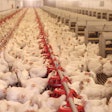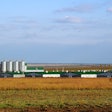
An average annual rise of 2% in world trade in grains during the crop years 2010/11 to 2015/16 was among five-year supply and demand projections presented to a meeting of the International Grains Council held in Perth, Australia.
World trade in grains in 2010/11 was placed at 241 million metric tons, marginally above the previous year. Wheat trade is set to fall, but this will likely be offset by increased maize shipments.
The meeting also heard expectations that world grain supplies will tighten in 2010/11 as production of wheat, maize and barley fall short of forecast consumption. However, the slowing growth of industrial use, especially of maize used for ethanol in the U.S., will limit the rise in grains consumption to 1.5% compared to 2% in the previous year.
The substantial fall in grain output in the CIS area, especially in Russia, is expected to lead to a shift of around 30 million metric tons in wheat and barley exports to other suppliers, notably the U.S., European Union, Argentina and Australia.
Having risen by 120 million metric tons in the previous three years, global carryover stocks of grain in 2010/11 are expected to decline by some 60 million tons, half of this being due to tightening maize supplies.
The outlook for 2011/12 was said to include a 2% increase in the global wheat area. This would partially be in response to higher prices, but it was also forecast to reflect a recovery after the extreme summer weather conditions of 2010.
Despite recent crop problems, said the IGC, grain availabilities are actually higher than forecast a year ago. However, consumption projections are also lifted, and stocks at the end of 2010/11 are expected to show some further decline from those previously forecast. Maize supplies, in particular, are likely to tighten.













